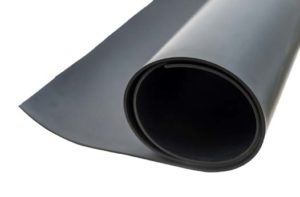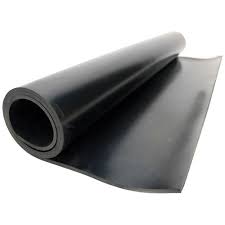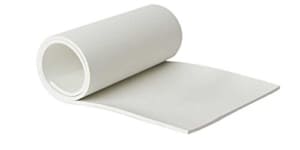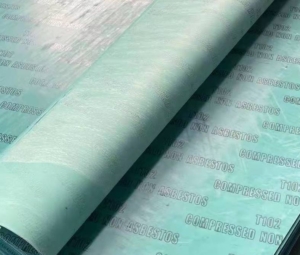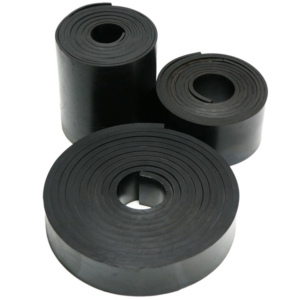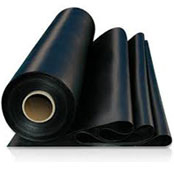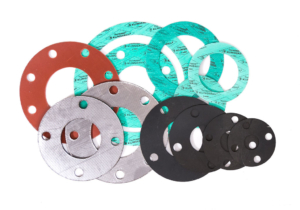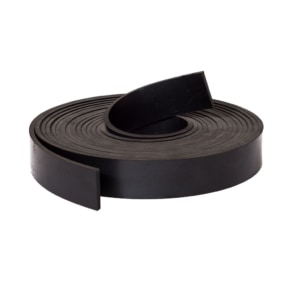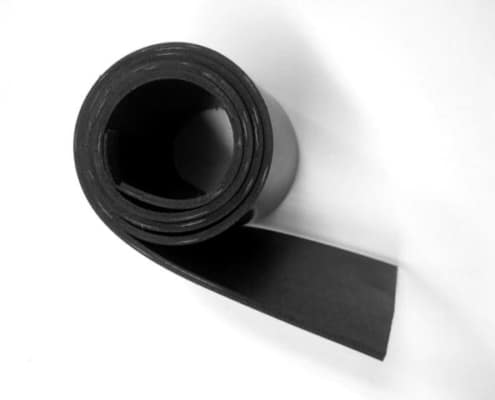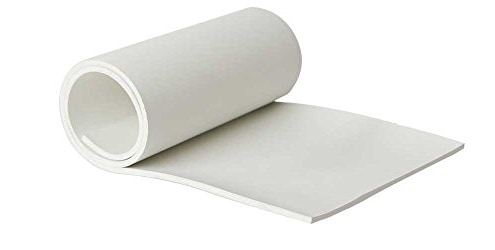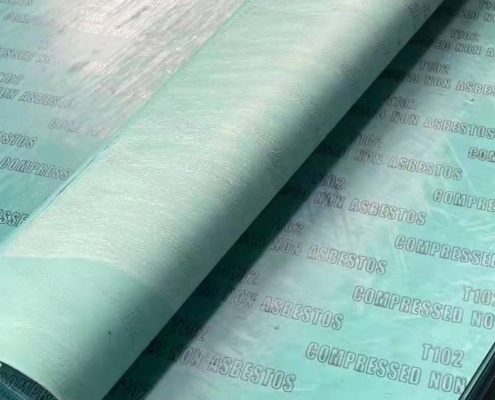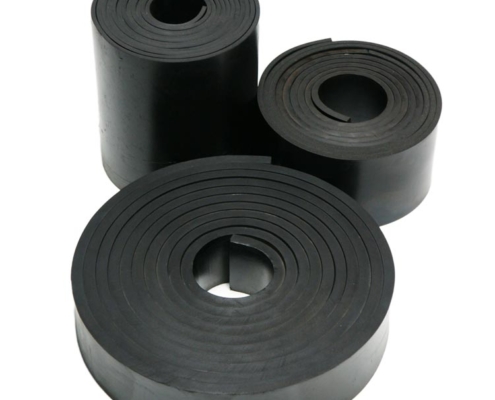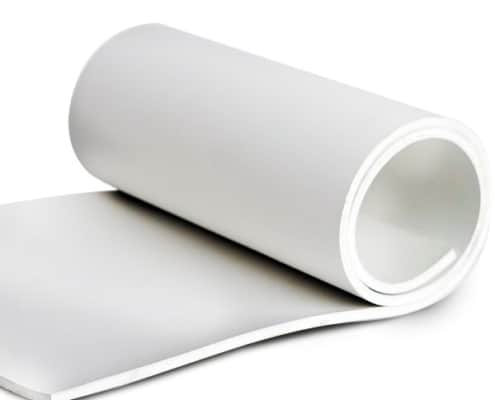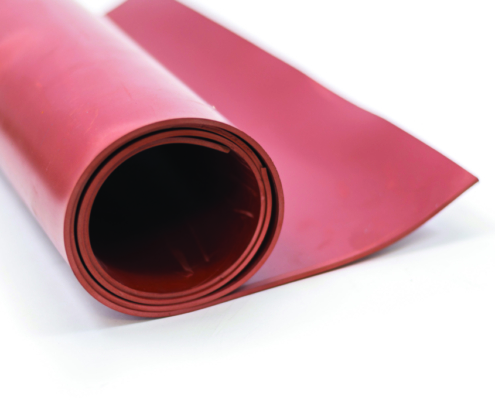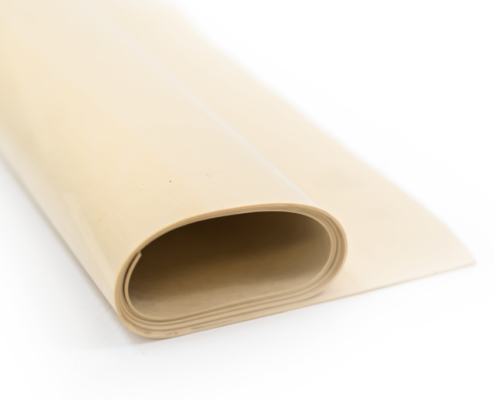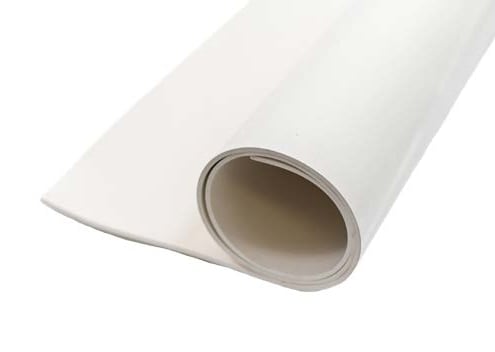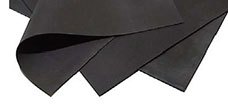Industrial Sheet Rubber Products
At UIP International, we carry an extensive variety of rubber sheeting and gasket material for nearly every application. We can meet the most demanding requirements for services in high-temperature sheet rubber, chemical-resistant sheet rubber, acid-resistant sheet rubber and more. We offer reinforced rubber sheeting, foam and sponge rubber, and we can custom-cut and fabricate all types of industrial rubber strips, seals, gaskets or rubber pieces. With one of the largest selections of rubber materials in North America, we offer hard-to-find durometers including very soft rubber as well as hard rubber sheeting and hard-to-find sizes and thicknesses. All our sheet rubber and gasket materials are available by the full roll, cut-to-length, and even hand-cut pieces or strips.
INDUSTRIAL & COMMERCIAL GRADE SHEET RUBBER
- Commercial Grade Neoprene Rubber – Sheet Type 80
- Cloth Inserted Neoprene Rubber – Sheet Type 87
- Industrial Grade Neoprene Rubber – Sheet Type 90
- Diaphragm Inserted Neoprene Rubber – Sheet Type 88
- Cloth Inserted Nitrile (BUNA-N) Rubber – Sheet Type 98
- Industrial Grade Nitrile (BUNA-N) Rubber – Sheet Type 93
- Premium Nitrile (BUNA-N) Rubber – Sheet Type 99
- Red SBR Rubber – Sheet Type 95
- Nylon Inserted SBR Rubber – Sheet Type 96
- EPDM Rubber – Peroxide Cured – Sheet Type 85
- CSM (Hypalon®) Rubber – Sheet Type 92
- Tan Pure Gum Natural Rubber – Sheet Type 97
- Commercial Grade Butyl Rubber – Sheet Type 91
- FKM/Fluoroelastomer (Viton®) Rubber – Sheet Type 100
- Red Silicone – Sheet Type 81
- 82 Fiberglass Inserted Red Silicone – Sheet Type 82
MATTING & SKIRTBOARD
COMPRESSED NON-ASBESTOS SHEET
OTHER
UIP offers an extensive range of industrial and commercial grade sheet rubber products and gasketing/gasket material manufactured under strict guidelines for exceptional quality. Each sheet rubber material has a unique set of properties, advantageous to various applications. Some, like natural gum sheet rubber or SBR Red Rubber, are great for use as a general sealing material. Others, such as a silicone sheet rubber rolls, are meant for specific applications involving very high or very low temperatures. At UIP, we carry large inventories in a large variety of materials to ensure we have the rubber product you need. Most are available from stock and are ready to ship same day. We can also fabricate any specialty material you may require. Contact us today to determine the right product for your application.
Custom cut rubber pieces, rubber stripping, and custom shaped gaskets are also available at UIP to meet the diverse needs of our customers. Blanket orders and blind shipping are available by request. Talk to one of our highly trained customer service representatives today!
All Sheet Rubber supplied by UIP conforms to Reach, RoHS, Prop 65 and SDS directives. Please let us know if you require a certificate of compliance.
What is the Right Rubber for Your Application?
UIP offers a wide range of elastomers for almost any application. We offer sheet rubber and gasket materials in various thicknesses, durometers and grades to best fit your needs.
General Sheet Rubber Properties & Applications:
Neoprene: Known for its high tolerance to hot and cold temperatures, chemical resistance and excellent sun/UV resistance. Neoprene is also oil-resistant. It can be used for gaskets and hoses because it does not degrade easily. It is also waterproof which makes it ideal for weather stripping and other insulation applications including wetsuits and scuba gear.
Nitrile (Buna-N/NBR): Nitrile rubber is best suited for petroleum-based products and fuels, with good abrasion-resistance and tensile strength. It also performs well at extreme temperatures. Nitrile is commonly used for gaskets, oil seals and many other automotive applications as well as fuel tanks and bladders in the aerospace industry. Due to its durability and hypoallergenic properties, it is often used in protective glove applications. White Nitrile is also popular in the food and beverage industry.
Silicone: Silicone rubber is a high-performing elastomer. Extreme temperature tolerance and durability are the most important mechanical properties of silicone. It also offers excellent tensile strength, good rebound and compression properties and general weather-resistance, making it ideal for outdoor applications. Applications include aerospace, including spacesuit fabrics and seals and gaskets found in aircrafts. It is also commonly used in bakeware, food containers and utensils.
FKM (Viton): An excellent elastomer with amazing capabilities designed to withstand the most challenging environments. Viton is highly fuel resistant at extreme temperatures and it retains flexibility, shape and seal when exposed to chemicals and high temperatures. Viton was designed for use in the aerospace industry and is now often used in oil and gas exploration and petroleum refining industries.
EPDM: EPDM rubber is best known for its outstanding resistance to elemental exposure including ozone, sun and oxygen. It is waterproof and highly resistant to acids, alkali and ketones. It also resists heat and aging. Applications include insulation and noise reduction and many other outdoor applications including roofing, construction, automotive and HVAC.
Butyl: Butyl Rubber offers exceptional resistance to oxygen and ozone and tolerates protracted exposure to heat, acids and alkalis. Extraordinary low gas and moisture permeability make it ideal for inner tubes and high pressure applications. It can also be used for gaskets and seals, shock mounts and tank and pond liners.
Tan Pure Gum (Natural Rubber): An extremely versatile rubber, natural rubber is resistant to water and some chemicals. It offers tremendous tensile strength and adheres easily to other materials. It offers excellent flexibility and durability. Applications include anti-vibration mounts, drive couplings, shock mounts, protective screening and rubber bands.
Red Rubber (SBR): SBR red rubber is a cost-effective, general purpose rubber commonly used in plumbing and gasketing. It conforms easily to uneven flange surfaces and can be used in air, hot and cold water, saturated steam and exterior services.

